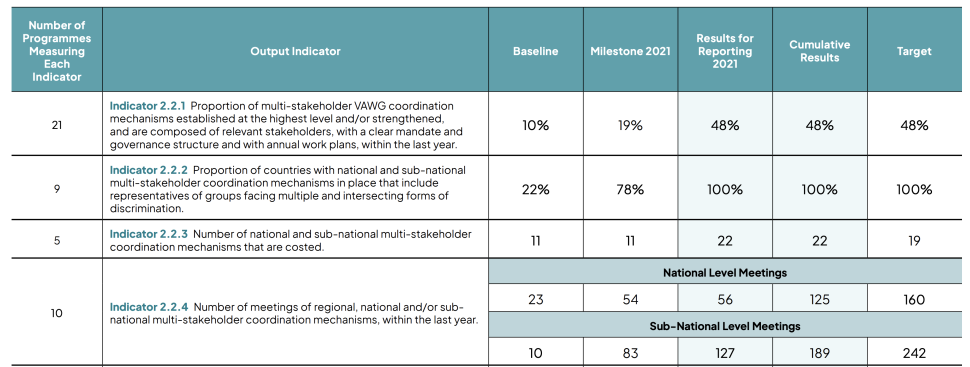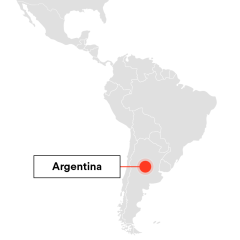Design indicators to measure change

Design indicators to measure change
Case Studies

At its inception, Spotlight Initiative developed a Global Results Framework including a range of indicators measuring specific outputs, from which country programmes then selected indicators as appropriate to their context. The framework features impact, outcome and output indicators, with annual reporting documenting progress at the country level.
One indicator example is Output 2.2: Multi-stakeholder national and/or sub-national coordination mechanisms established at the highest level and/or strengthened that are adequately funded and include multi-sectoral representation and representation from the most marginalised groups. This output is measured by four indicators:
- Indicator 2.2.1 Proportion of supported multi-stakeholder coordination mechanisms established at the highest level and/or strengthened composed of relevant stakeholders, with a clear mandate and governance structure and with annual work plans.
- Indicator 2.2.2 Proportion of national and sub-national multi-stakeholder coordination mechanisms that include representatives of groups facing multiple and intersecting forms of discrimination.
- Indicator 2.2.3 Proportion of national and sub-national multi-stakeholder coordination mechanisms that are costed.
- Indicator 2.2.4 Number of annual meetings of national and/or sub-national multi-stakeholder coordination mechanisms.
To demonstrate how Spotlight Initiative has measured baseline, milestone and targets for Output 2.2, the following table shows data collected from 2021.




In Argentina, the Women's Office of the Supreme Court of Justice of the Nation, the Specialised Prosecutor's Unit on Violence against Women of the Public Prosecutor's Office and the Ministry of Security of the Nation are responsible for recording, systematising and analysing information on femicides. To promote inter-agency communication and harmonise the gathering and measuring of national femicide data, the Spotlight Initiative programme in Argentina provided technical assistance to the agencies to construct comparable indicators to measure the violent deaths of women in the country.
In collaboration with implementing partners, the Spotlight Initiative programme first assessed the reports, inputs, and indicators of each agency and analysed the types of data collection. Then, information published by the agencies to compare the methodologies used and the data they produced was systematised. Based on detailed analysis, the final report compares the indicators used by the different government agencies, identifies similar indicators, and features recommendations on how methodologies and data collection can be improved for the future.







